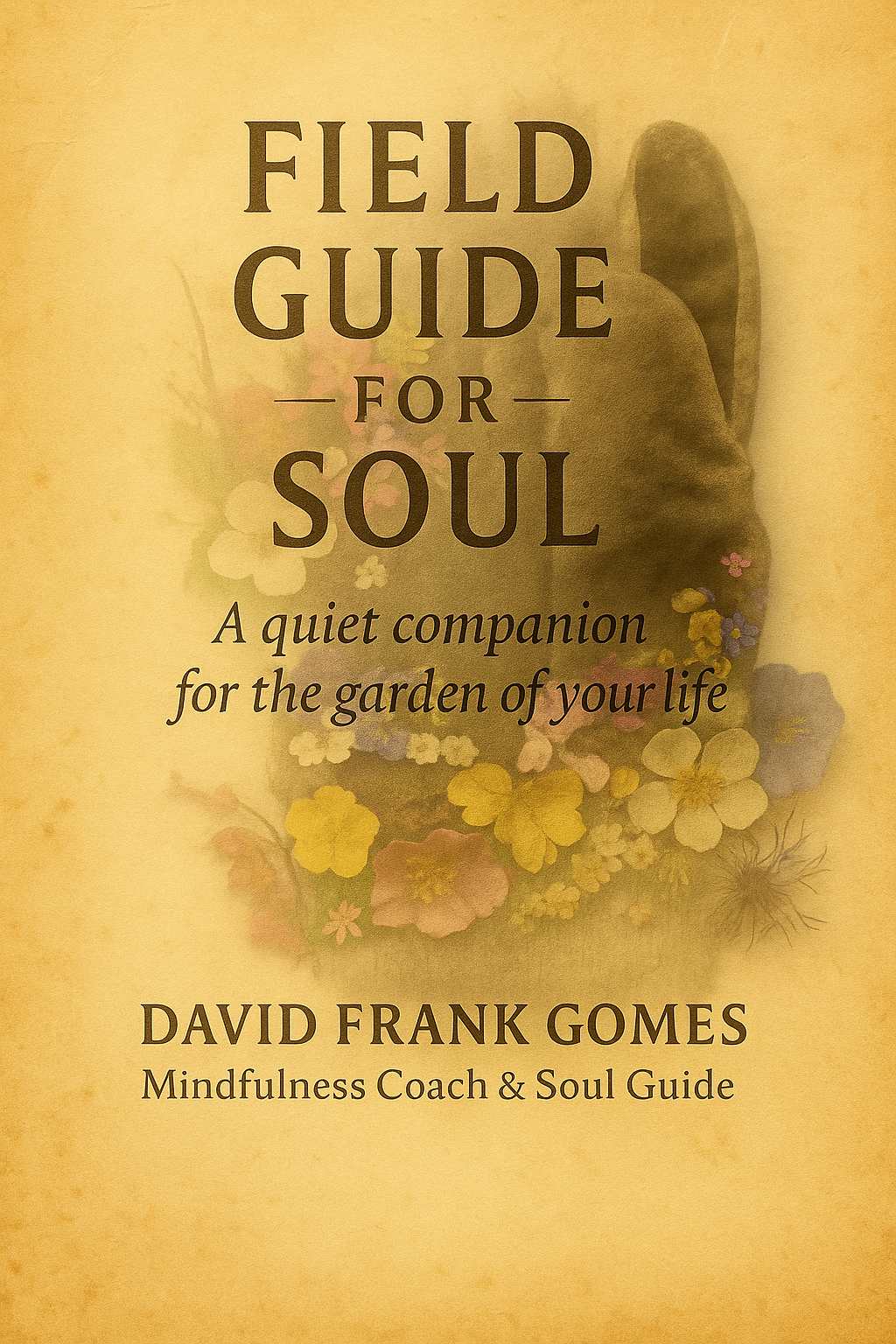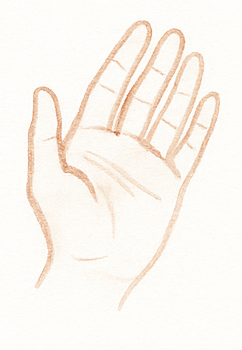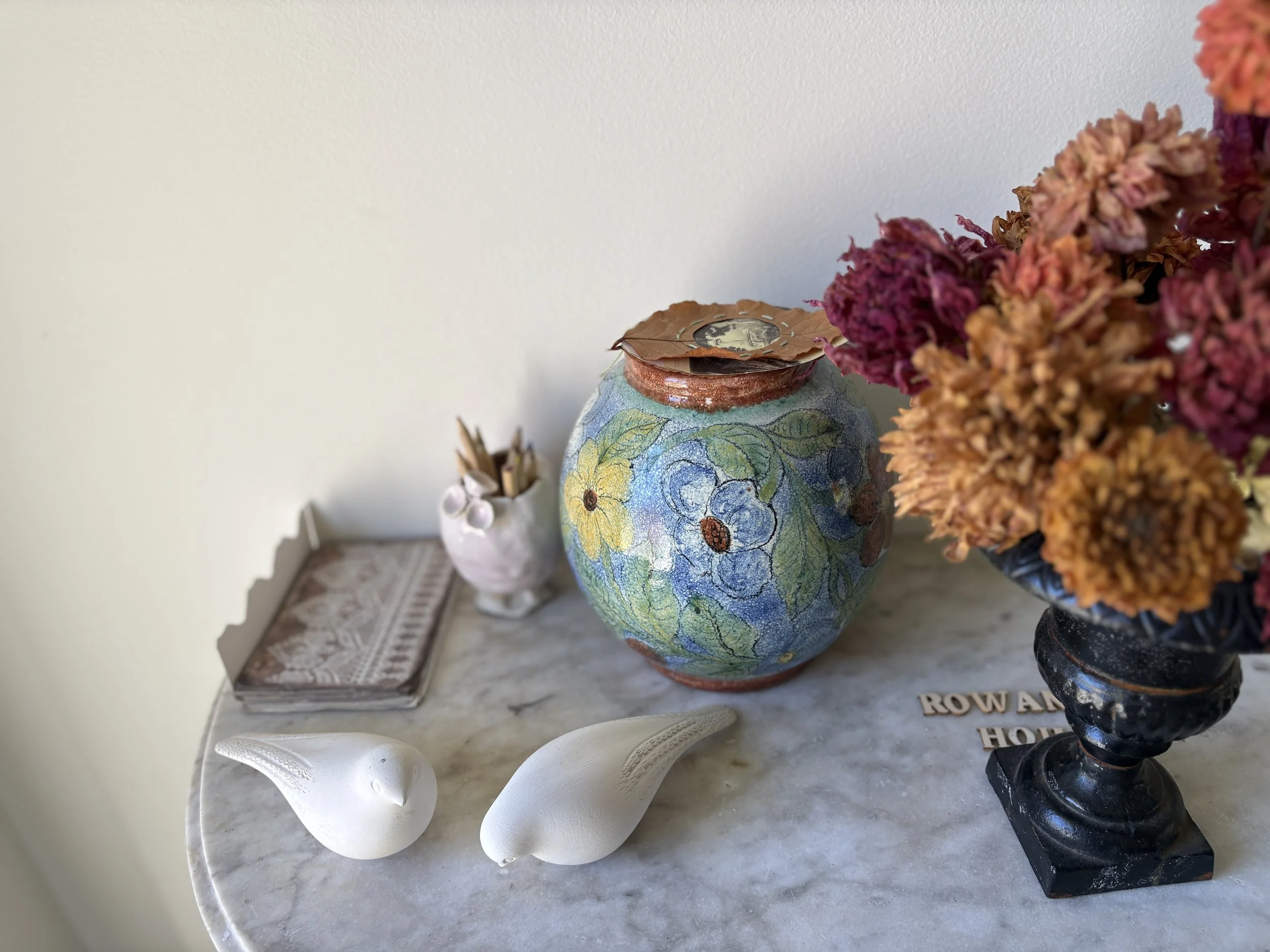
DEDICATION
May this guide help you find your way back
to what you already know.
A NOTE ON TIME
A companion for the seasons of your becoming.
Read slowly. Put it down often.
Let questions settle.
Return when you're ready, not before.

For twenty years, I've worked with people who lie awake at night wondering: Am I on the right path?
They're successful, busy, checking off goals. But something feels off. Their mind and heart are at war. They're rowing in two different directions—one toward what they think they should want, another toward what their soul actually needs.
Most of us get the order mixed up. We make our outer path—the doing, the achieving, the proving—what we think life is about. We wait for clarity, for the perfect moment, for everything to align before we take a step.
But the soul doesn't work that way. It asks us to begin anyway. To stop and listen. To return to what we already know, beneath all the noise.
This guide is about finding that alignment. Not through discipline or force, but through devotion. Through the questions that help you hear yourself again. Through the quiet practice of returning, again and again, to what matters.
HOW TO USE THIS GUIDE
Here's what I've learned: This work cannot be rushed.
The soul moves with the rhythms of seasons—periods of growth, rest, harvest, and dormancy. Some questions need weeks to answer. Some answers arrive in dreams. Some clarity comes only after you've stopped looking for it.
So I've designed this guide to honor that rhythm. Between sections, you'll find poems and pauses—invitations to stop and breathe. These aren't filler. They're essential. They give your insights time to root.
This is meant to be savored over weeks, even months. Work with one section, then put this down. Live with the questions. Notice what shifts. Return when something calls you back.
The transformation happens in the spaces between the words.
My advice: Print this out. Put it in a binder or folder and carry it with you. There's something powerful about physical paper—you can write in the margins, fold corners, make it yours. Keep it in your bag, on your nightstand, wherever you'll remember to return to it.
Beyond that, there are no rules. But here's what tends to work:
Go slowly. One section per week, or longer.
Light a candle. Make tea. Create a small ritual.
Write by hand when you can.
If you don't know an answer, sit with not knowing.
Come back seasonally. Your answers will change as you change.

The pauses are more important than the doing.
PART ONE: THE PRACTICE OF GRATITUDE
before we dive into purpose and vision,
we begin here:
with noticing.
With paying attention
to what already brings us alive.
This isn't just a gratitude practice. It's an attention practice. It's learning to see what's already here, what's already working, what already lights you up—before you go looking for what's missing.
Most people skip this step. They want to jump straight to their purpose, their calling, their next big thing. But here's what I've learned: You can't find your path if you don't know what brings you joy.
The Jar of Light practice is simple, but it's foundational. It trains your brain to notice moments of delight. And those moments? They're breadcrumbs. They point you toward what matters.
WHAT IS A JAR OF LIGHT?

It's beautifully simple. You need:
A jar (make it beautiful—a container that you love)
A pencil
A small pad of note paper
Each time you experience or have feelings of gratitude, write them down and place them in your jar. I always add the day and date as well.
The key is to be natural about it. This should not be a forced or regimented regime of phony gratitudes that you feel you have to do daily. But you start to get in the habit of recording moments that delight you, and it feels nice.
They don't have to be big or special things. Often mine are very ordinary: The dog made me laugh out loud. We made a wonderful dinner. Had a great walk by the sea with a friend. An amazing day at work where I felt I made a real difference in someone's life.
Creating a focus on the little moments that bring delight or satisfaction is a lovely practice and a way of paying more attention to what brings you joy.
THE RITUAL
Keep your jar in a place that reminds you to use it. I keep mine by my front door, with a pad and pencil always available.
You can open the jar every month and read all the gratitudes. Then start again.
The way I do it—I only read them all once per year, on New Year's Eve. Then the following morning I take them all to the beach and burn them to set them free. Then I start again.
What's so wonderful is the memories it brings back of little things I have completely forgotten. I often find myself shedding a few tears.
Why This Matters
This practice does something profound: it rewires your attention. Instead of scrolling through your day looking for what went wrong, what you didn't accomplish, what's missing—you start noticing what went right.
And here's the magic: What you pay attention to grows.
When you train yourself to notice moments of joy, you start experiencing more of them. Not because your life suddenly got better, but because you're finally seeing what was always there.
This is the foundation. Everything else in this guide builds on this practice of attention, of noticing, of coming back to what's real and true and alive in your life.

This is a good place to stop. Don't rush into the next section. Put this guide down. Go set up your Jar of Light. Light a candle. Make it beautiful. Live with this practice for at least a week, maybe two. Notice what happens when you start paying attention to moments of delight. The next part will be here when you're ready.
INTERLUDE: ON PATIENCE
for taking years to grow.
The seasons don't rush
to prove themselves.
Winter teaches us
that rest is not failure.
Spring reminds us
that emergence cannot be forced.
You are learning to trust
the timing of your own unfolding.
This is the work.
PART TWO: FINDING TRUE NORTH
If you're here, you've been practicing gratitude. You've been noticing. You've been paying attention to what brings you alive.
Good. That noticing is not separate from what comes next—it's the foundation.
Over twenty years of working with seekers, I've learned that people don't need more information about finding their purpose. They need to remember what their soul already knows. They need frameworks that help them hear their own wisdom beneath the noise of expectations and "shoulds."
What follows are the questions and practices that have helped hundreds of people find their way home to themselves. Not quickly. Not easily. But deeply, truly.
Take your time here. These are not questions to answer in one sitting. They're inquiries to live with, to return to, to let ripen in their own time.
STEP 1: YOUR COMPASS STATEMENT
It offers direction when the world is fog,
and the heart is uncertain.
In a world that constantly asks you to be more, do more, achieve more, your Compass Statement is your anchor. It's not a vision board platitude or an Instagram caption. It's the truth you return to when you've lost your way.
Your Compass Statement is not a rigid goal or a set-in-stone motto—it's a living truth, a murmur you trust when the noise gets loud. It's the whisper of the soul that guides you back home.
I've worked with CEOs who realized their compass was "Choose peace over achievement." I've worked with mothers who discovered "I create space for others to be themselves." I've worked with artists whose compass was simply "Follow beauty, always."
The right compass statement will feel like relief. Like recognition. Like: Oh. Yes. This.
HOW TO CRAFT YOUR COMPASS STATEMENT
This is not something to force. Let it emerge through these questions. Sit with them over days, not minutes:
When you're at your best, most aligned self, what quality or energy do you embody?
What matters more than anything else in how you live your life?
If you could give your future self one guiding principle, what would it be?
What do you want to be true about you, no matter what circumstances you face?
What word or phrase keeps appearing in your life, calling you back?
Your Compass Statement might be a single sentence or a few phrases. It should feel like coming home. When you read it, something in your chest should say: Yes. This.
Examples:
"I choose to live in harmony, rooted in love and driven by purpose."
"I move through the world with curiosity and kindness."
"I create beauty and spaciousness wherever I go."

Your Compass Statement:
Write it. Speak it aloud. Feel how it lands in your body. Does it feel true? Does something settle? This is your True North.
ON DIRECTION
where to go.
It tells you
which way is north
when you've forgotten
how to find it yourself.
Some days you'll walk toward it.
Some days you won't.
The compass doesn't judge.
It simply points,
patient and true,
waiting for the moment
you remember
you wanted to go home.
STEP 2: YOUR PURPOSE PROFILE
It is a presence, a frequency,
a subtle pulse that flows through your life.
Here's what I've learned after two decades of helping people find their purpose: You're not looking for it. You're remembering it.
Purpose isn't something external you discover, like a treasure buried in the ground. It's woven into who you've always been—in the things that make you angry, the moments when time disappears, the ways people naturally turn to you.
Your Purpose Profile is a map of your soul's calling—the constellation of gifts, values, and longings that make you uniquely you. It's not about the answer, but about the remembering. A gentle uncovering of what your heart already knows.
I've watched people cry when they finally name their purpose, not because it's new, but because it's been there all along and they finally have permission to claim it.
QUESTIONS TO ILLUMINATE YOUR PURPOSE
Don't try to answer all of these at once. Pick one or two. Sit with them. Go for a walk with them. Let answers come in their own time.
What do people come to you for? What do they trust you with?
When do you feel most alive, most yourself, most in flow?
What breaks your heart about the world? (Our grief points to our purpose.)
What would you do even if no one paid you, thanked you, or noticed?
What themes, topics, or causes keep calling you back, no matter how many times you try to ignore them?
If you could wave a magic wand and shift one thing in the world, what would it be?
What were you doing the last time you completely lost track of time?
What do you do that feels less like work and more like being yourself?
Example: "I am here to inspire others to embrace their authentic selves and make decisions based on their inner truth. I help people find the courage to listen to their own wisdom, even when the world is loud. I create spaces of safety, reflection, and transformation."

Your Purpose Profile:
This is not your job description. This is your soul's signature. This is the thread that weaves through everything you do, whether you're parenting, creating, teaching, healing, or simply being.
THE QUESTION THAT LIVES IN YOU
you've been carrying
for years.
It shows up in the books you read,
the conversations that wake you up,
the moments when you forget
to pretend.
You think you're looking for the answer.
But maybe the question itself
is the gift.
Maybe purpose isn't found
in finally knowing,
but in learning to love
the question
enough to live it.
STEP 3: YOUR PERSONAL VISION
you are designing it,
with intention, with creativity, with love.
Vision is not a lofty fantasy; it's the imagination applied to reality, the blueprint of your soul's dream brought into form.
Here's a truth they don't tell you: You get to choose. Not everything, but more than you think. You get to choose what kind of life you build, what story you tell, what you say yes and no to.
Your Personal Vision is the movie playing in your mind's eye when you imagine your most aligned life. It's not about perfection. It's about resonance. It's about designing a life that feels like you.
In my years of coaching, I've noticed something: People don't struggle with dreaming. They struggle with giving themselves permission to want what they actually want, not what they think they should want.
So as you move through this section, be honest. Radically honest. No one else needs to see this. What would you create if you weren't afraid of being judged? If you weren't trying to prove anything?
CRAFTING YOUR PERSONAL VISION
Close your eyes. Take a few deep breaths. Imagine it's three years from now, and you're living a life that feels deeply aligned. You wake up in the morning, and something in your chest says: This is it. This is my life.
Now explore these questions. Take your time. Be specific. Paint the picture:
Where are you? Describe your environment, your home, your surroundings. What do you see when you look out the window?
Who is with you? What relationships are you nurturing?
How do you spend your days? What kind of work or creative expression fills your time?
What does your body feel like? How do you move through the world?
What brings you joy? What makes you feel alive?
What have you let go of? What are you no longer carrying?
What are you creating, building, or nurturing?
How are you serving? What impact are you making?

Your Personal Vision:
CLOSING BLESSING
again and again.
May you trust the whispers
beneath the noise.
May you walk your path
with courage and tenderness,
knowing you are exactly
where you need to be.

CONTINUE YOUR JOURNEY
If this guide helped you find your way, I'd love to walk alongside you.
Explore one-on-one coaching, courses, and more soul-centered offerings at:
www.davidfrankgomes.com
Join my Substack for weekly reflections:
substack.com/@davidfrankgomes
